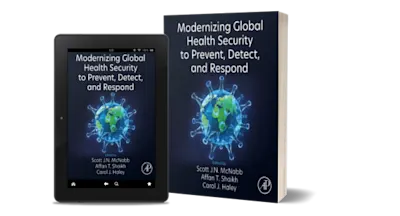Limited Offer
Save 50% on book bundles
Immediately download your ebook while waiting for your print delivery. No promo code needed.

Pulmonary hypertension is defined as a mean pulmonary artery pressure (mPAP) ≥25 mmHg, with Pulmonary Capillary Wedge Pressure ≤ 15 mmHg, measured by cardiac catheterization. Th… Read more
Limited Offer

Pulmonary hypertension is defined as a mean pulmonary artery pressure (mPAP) ≥25 mmHg, with Pulmonary Capillary Wedge Pressure ≤ 15 mmHg, measured by cardiac catheterization. The etiology of PH has a varied spectrum extending right from Drugs, toxins and portal hypertension to HIV, Collagen Vascular Diseases and Persistent Pulmonary Hypertension of Newborn, etc.
The estimation of disease prevalence has been nearly impossible owing to the geographic distribution and economic diversity, along with significant regional variations in human development and healthcare infrastructure. A large number of patients with PH never reach the health centers capable of diagnosing the disease condition correctly.
Advance pulmonary vascular disease as a result of uncorrected CHD is a major health challenge in the developing world.
PH exists as a major component of many forms of cardiac and pulmonary disease. While breathlessness is the most common feature of PH, patients often also present with chest pain, syncope, fatigue, weakness and abdominal distension. The precordial signs include a right ventricular lift, accentuated pulmonary component of S2, a pansystolic murmur of Tricuspid regurgitation, a diastolic murmur of pulmonary regurgitation and a right ventricular S3.
The standard diagnostic workup in developed countries includes a series of investigations to rule out the secondary causes. Additional tests are required to estimate the disease severity and plan the appropriate treatment. These include the cardiac catheterization, selective pulmonary angiography by direct injection of pulmonary arteries, high resolution CT scan, cardiac magnetic resonance, ABGs, nocturnal O2 saturation, etc. While most of the basic management is feasible in the Indian conditions, most of the newly introduced drugs are either not available or are available at costs that far exceed the paying capacity of an average citizen of a developing economy. An underdeveloped health insurance system adds further to the financial burden of the treatment.
Measures like formulation of guidelines for diagnosis and treatment of PAH, educating clinicians and scientists and making medications affordable to poor patients might ensue a breakthrough in the overall management of pulmonary hypertension.
SH
RK